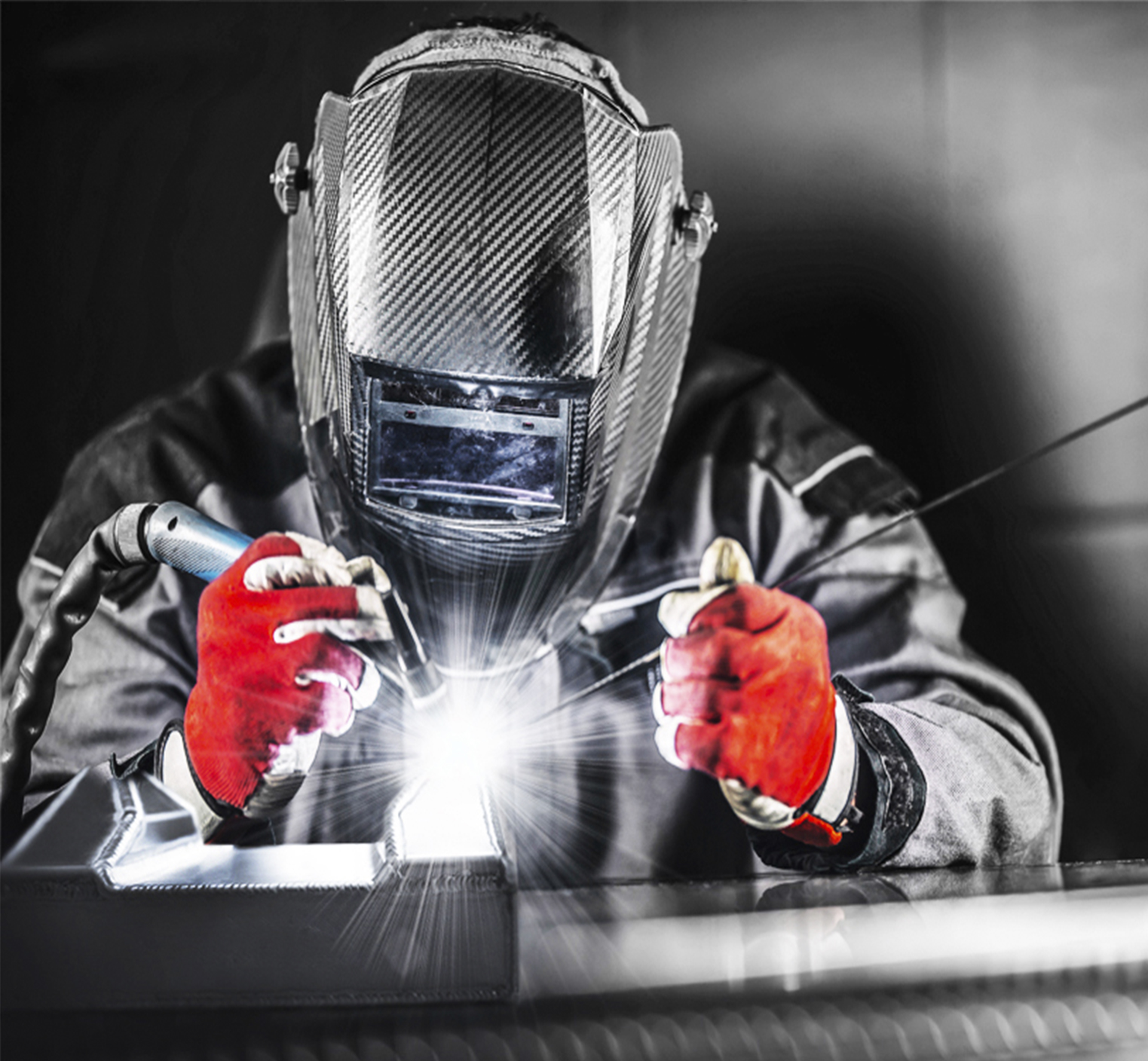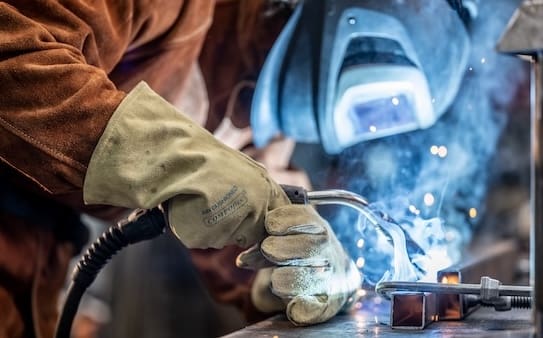Signs of weld failure and what Belgrade can do about them
Wiki Article
All About Welding: Secret Insights Into Techniques and Finest Practices for Success
Welding incorporates a range of strategies, each fit for particular products and applications. Recognizing these approaches, such as GMAW, SMAW, and TIG, is essential for achieving optimal results. The appropriate equipment and security techniques can not be overlooked. As prep work and repairing play important duties in the welding process, mastering these elements can greatly enhance the top quality of the end product. What are the key aspects that guarantee an effective weld?Recognizing Various Welding Strategies
Welding methods incorporate a variety of methods, each matched to details applications and materials. Amongst the most usual techniques are Gas Steel Arc Welding (GMAW), Protected Metal Arc Welding (SMAW), and Tungsten Inert Gas Welding (TIG) GMAW, additionally known as MIG welding, is preferred for its rate and adaptability, making it ideal for slim materials. SMAW, or stick welding, is favored for its simpleness and performance in outside atmospheres, particularly with thicker metals. TIG welding supplies accuracy and control, making it ideal for complex work and non-ferrous steels (Montana Mobile Welding and Repair Fabrication). Each technique has its special advantages and considerations, allowing welders to choose the very best approach based upon the project's requirements, material type, and preferred end results. Understanding these methods is vital for effective weldingCrucial Welding Devices and Tools
While different welding techniques need details abilities, the best devices and tools are similarly necessary for accomplishing quality results. Vital welding tools consists of welding machines, which vary depending upon the strategy-- such as MIG, TIG, or stick welding. Safety gear, consisting of headgears, aprons, and gloves, warranties safety and comfort during the procedure. Furthermore, fixtures and clamps assist protect products in place, making sure accuracy in welds. Consumables like welding poles, cable, and protecting gas are additionally critical components that affect the top quality of the weld. Tools such as cutters and mills facilitate surface area preparation and post-weld completing, contributing to an expert end result. Investing in high-quality tools ultimately improves the performance and performance of welding projects.Safety Practices in Welding
Appropriate safety and security techniques are important in the welding sector to safeguard workers from possible dangers. Welders need to use appropriate personal safety devices (PPE), consisting of headgears with appropriate shading, handwear covers, and flame-resistant clothing. Ample ventilation is essential to minimize exposure to unsafe fumes and gases generated during the welding process. Additionally, workers ought to be educated in the correct handling of welding devices to avoid mishaps. Fire safety and security actions, such as maintaining flammable products far from the welding area and having fire extinguishers conveniently offered, are necessary. Normal inspections of tools and work areas can assist determine prospective dangers before they lead to mishaps. By sticking to these safety practices, welders can produce a safer working setting and minimize risks related to their profession.Readying Materials for Welding
Preparing materials for welding is an essential step that considerably affects the top quality and stability of the final product (Montana Mobile Welding and Repair). Correct preparation involves cleaning up the surfaces to eliminate contaminants such as dirt, corrosion, and oil, which can compromise the weld. Techniques such as grinding, fining sand, or using solvents are generally employed to attain a tidy surface. In addition, making sure that the products fit together well is important; gaps can result in weak welds. It's likewise crucial to take into consideration the alignment and positioning of the elements, as this will affect the ease of welding and the last outcome. Picking the proper filler material and guaranteeing compatibility with the base steels is crucial for attaining strong, durable welds.Tips for Achieving High-Quality Welds
Attaining high-grade welds needs focus to information and adherence to best practices throughout the welding procedure. Proper joint preparation is vital, making certain surface areas are tidy and totally free from pollutants. Selecting the ideal filler material and welding technique based upon the base metals is critical for suitable bonding. Maintaining regular traveling speed and angle while welding can prevent flaws and promote harmony. Furthermore, regulating heat input is essential; too much warm can cause bending and click now compromised joints. Regularly examining the welds during the process permits prompt adjustments if required. Ultimately, utilizing ideal post-weld treatments, such as cleaning and tension alleviation, can improve the longevity and honesty of the weld, ultimately guaranteeing an effective result.Troubleshooting Typical Welding Issues
Welding often presents difficulties that can impact the quality and stability of the last item. Typical concerns such as porosity, inconsistent weld grains, and overheating can develop, each calling for certain repairing strategies. Recognizing these issues is crucial for welders to improve their abilities and achieve perfect outcomes.Porosity Problems Described
Although porosity can commonly be ignored, it stays an essential concern in welding that can compromise the integrity of a completed item. Porosity describes the existence of little gas pockets within the weld bead, which can lead and damage the joint to early failing. This issue normally develops from pollutants, moisture, or improper shielding gas insurance coverage during the welding procedure. To alleviate porosity, welders should confirm that the base products are completely dry and clean, make use of suitable shielding gases, and keep regular welding criteria. Routinely evaluating the equipment and setting can likewise assist recognize possible problems prior to they show up in the weld. Attending to porosity properly is vital for attaining strong, sturdy welds that fulfill top quality criteria.
Irregular Weld Beads
Inconsistent weld beads can significantly impact the top quality and stamina of a finished product. Different variables add to this concern, including improper traveling rate, wrong amperage settings, and irregular electrode angles. When the welder moves as well promptly, a bead might show up narrow and do not have penetration, while moving too slowly can create excessive build-up. Furthermore, utilizing the incorrect amperage can result in either damaging or too much spatter, both of which compromise weld honesty. The welder's method, such as inconsistent torch motion, can also result in uneven grain look. To mitigate these troubles, welders should concentrate on maintaining consistent, controlled motions and guaranteeing proper equipment settings to attain harmony in their welds. Uniformity is vital to achieving dependable and strong welds.Overheating and Warping Issues
Too much warm during the welding procedure can lead to substantial getting too hot and deforming problems, influencing the architectural stability have a peek at these guys of the workpiece. These troubles frequently manifest as distortion, which can compromise placement and fit-up, making further setting up challenging. Aspects adding to overheating include the option of welding parameters, such as voltage and travel rate, along with the sort of material being welded. To alleviate these concerns, welders should maintain consistent travel speed and suitable warm input while checking the work surface temperature. Additionally, pre-heating or post-weld heat therapy can aid alleviate anxieties triggered by rapid cooling - Belgrade Fabrication. Regular evaluation and adherence to ideal techniques are necessary in avoiding getting too hot and ensuring the long life and integrity of bonded frameworksRegularly Asked Concerns
What Are the Job Opportunities in the Welding Industry?
The welding industry provides varied profession chances, consisting of placements as welders, engineers, assessors, and teachers. Professionals can operate in manufacturing, building, aerospace, and vehicle industries, gaining from solid need and affordable wages in different roles.Exactly How Can I Improve My Welding Speed Without Sacrificing Quality?
To improve welding rate without compromising quality, one should practice reliable methods, maintain equipment, maximize settings, and boost hand-eye coordination. Routine training and looking for responses can additionally significantly add to attaining quicker, high-quality welds.What Qualifications Are Available for Welders?
Many accreditations exist for welders, consisting of those from the American Welding Culture (AWS), the National Center for Construction Education And Learning and Study (NCCER), and different industry-specific companies. These credentials improve employability and demonstrate skill effectiveness.Just How Does Welding Affect the Residences of Metals?
Welding affects the buildings of metals by changing their microstructure, which can bring about modifications in ductility, strength, check here and hardness. Warmth input and cooling prices during the process greatly affect these product features.Can I Weld Dissimilar Metals With Each Other?

Report this wiki page